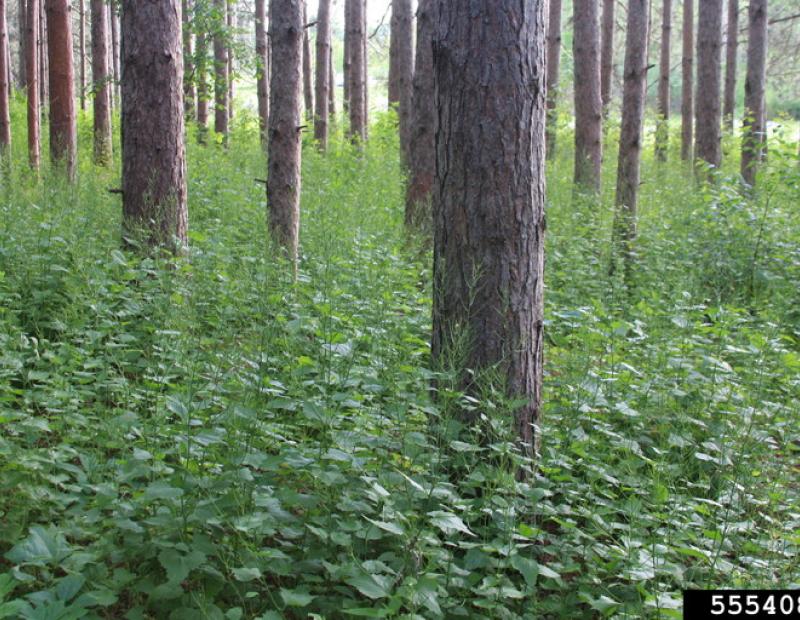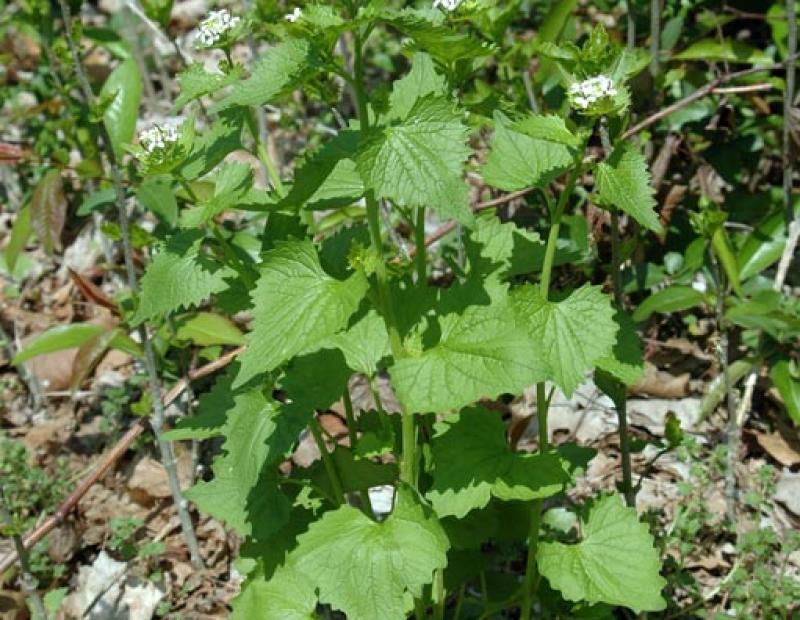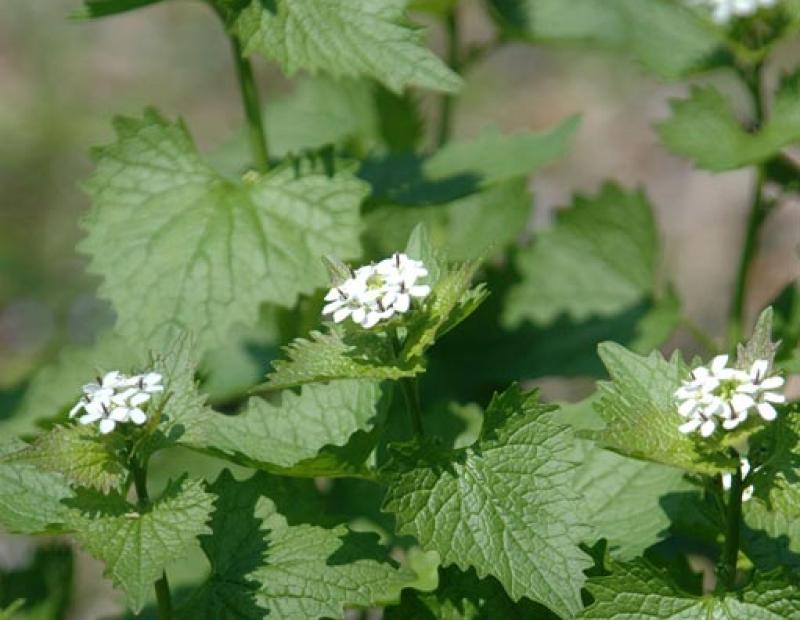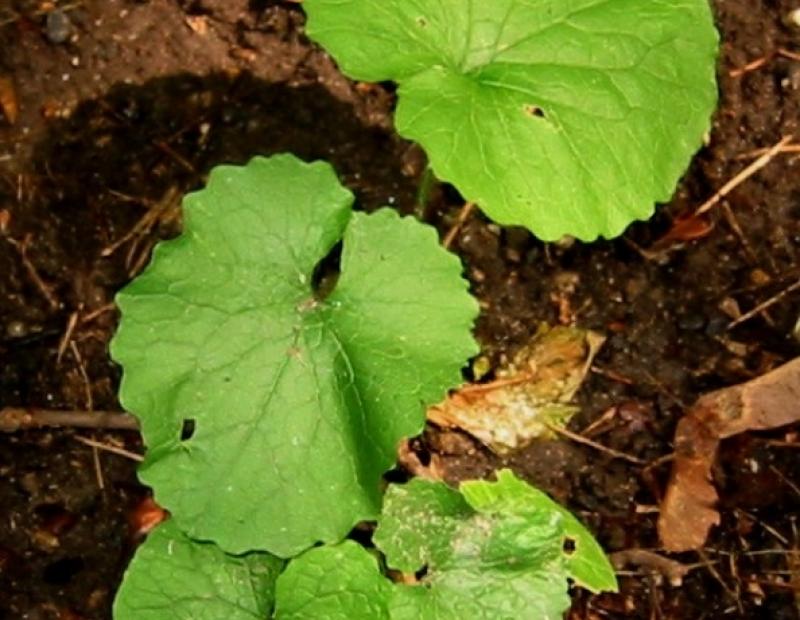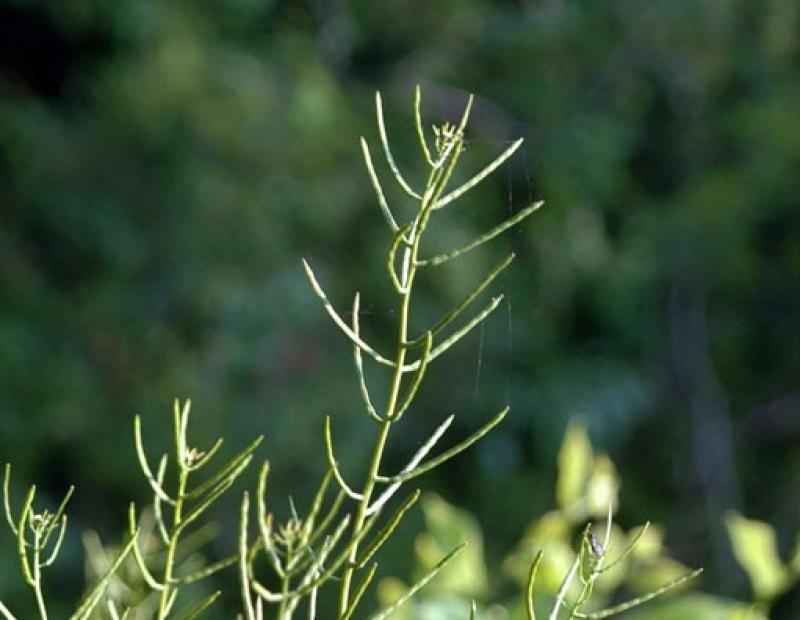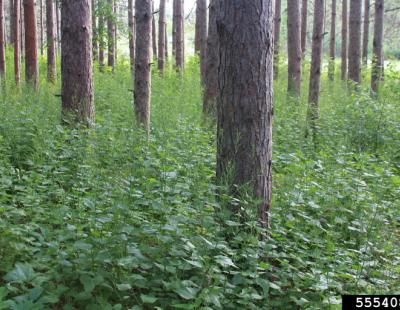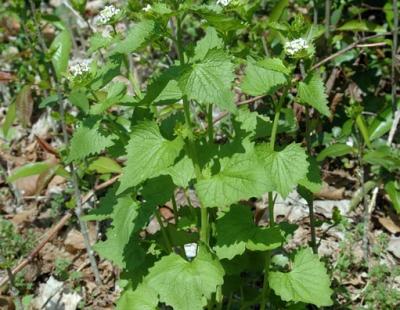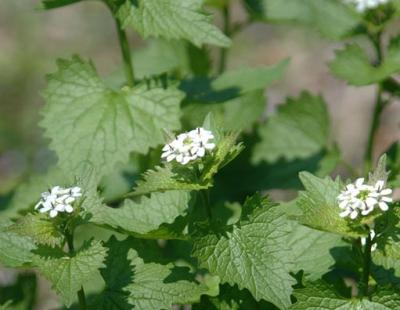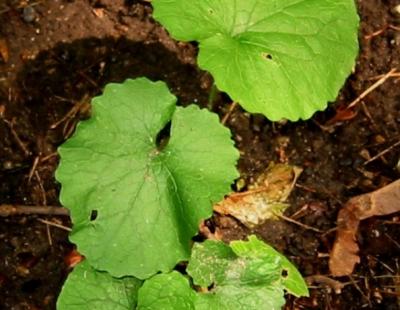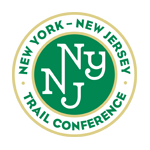- Terrestrial Plants
- Other Herbaceous
Garlic mustard is an invader of forest understories. This nonnative herb can form dense stands that have the potential to control light, water, and nutrient resources, and thus outcompete native herbs that occupy a similar niche. Laboratory studies suggest that the nonnative herb is allelopathic, releasing chemicals that prevent the growth of competing grasses and herbs. Field studies show that removal of garlic mustard leads to increased diversity of other species.
Garlic mustard is native to Europe and parts of Asia. Believed to be introduced for food and medicinal purposes, the nonnative herb was first reported on Long Island, New York, in 1868. It can be recognized by the garlic odor given off when its leaves are crushed.
Garlic mustard has a biennial lifecycle, therefore the species to fully matures and produce seeds over a two-year period. Seeds germinate in February to early March of the first year and grow into a short rosette by mid-summer. During the second year, the plant grows a stalk and flowers. Seedpods, called siliques, form in May and hold up to 28 seeds. An individual plant will grow up to 22 siliques, producing an average of 600 seeds. Seeds are dispersed by walking animals and humans and typically germinate within 1 or 2 years. The adult plant dies by June, once it has produced seeds.
Garlic mustard occurs along roadsides and forest edges and in disturbed woodlots and forest habitats. It grows best in moist soil and shade, but has been observed growing in full sunlight. Garlic mustard is a prohibited plant in New York State. The species is widespread in New York with high observation density in the Lower Hudson Valley.

